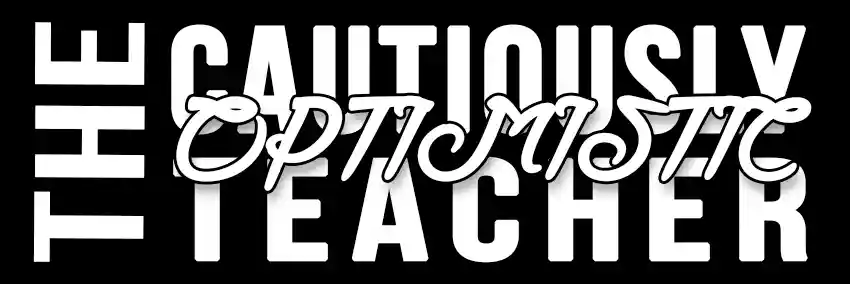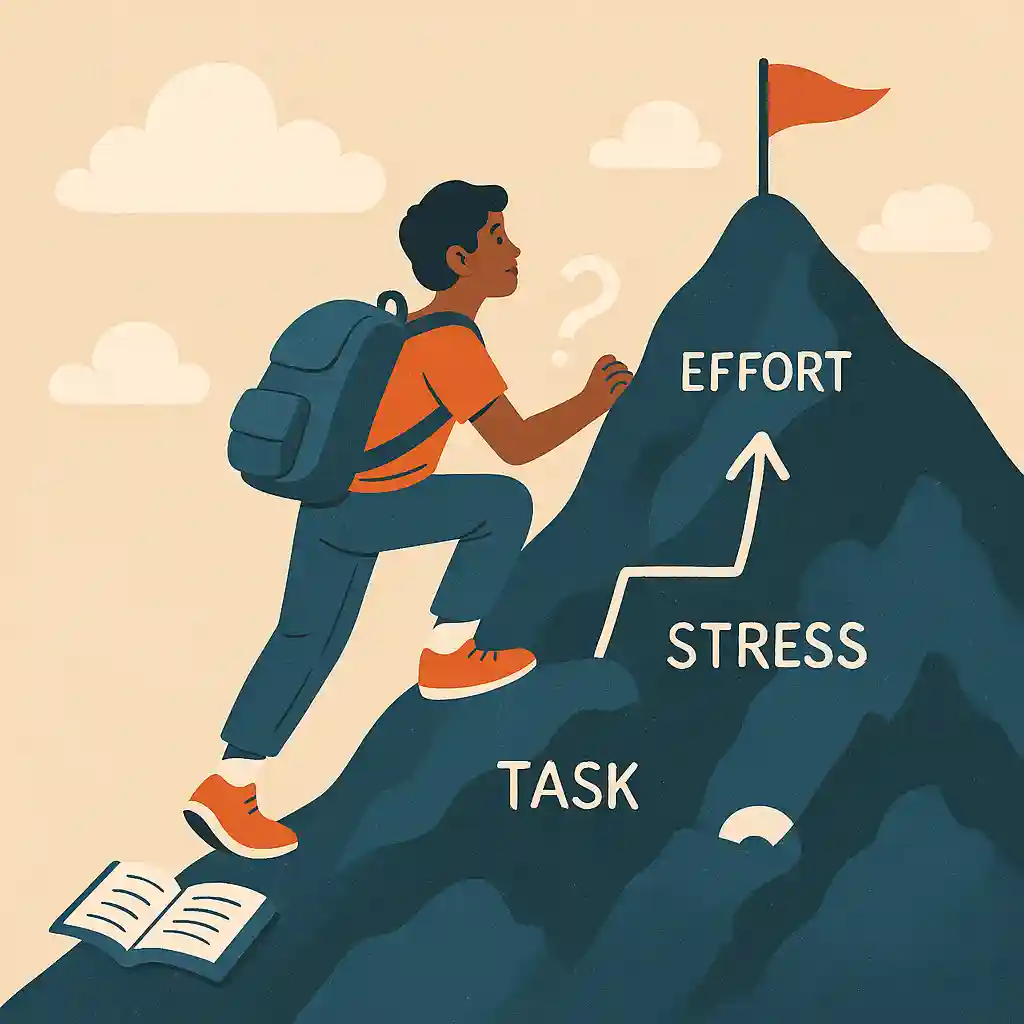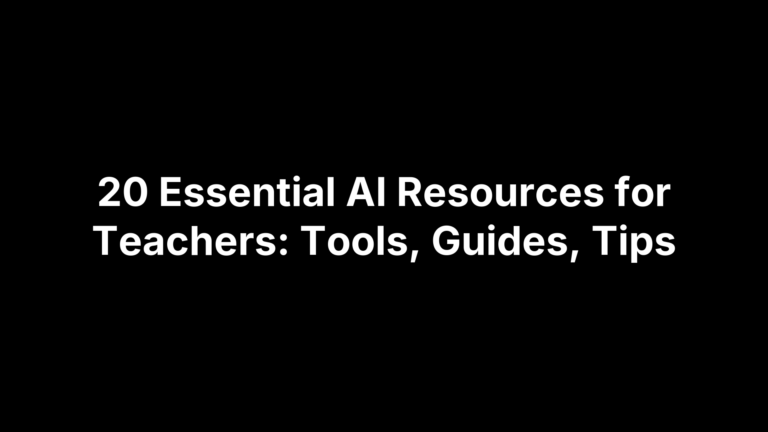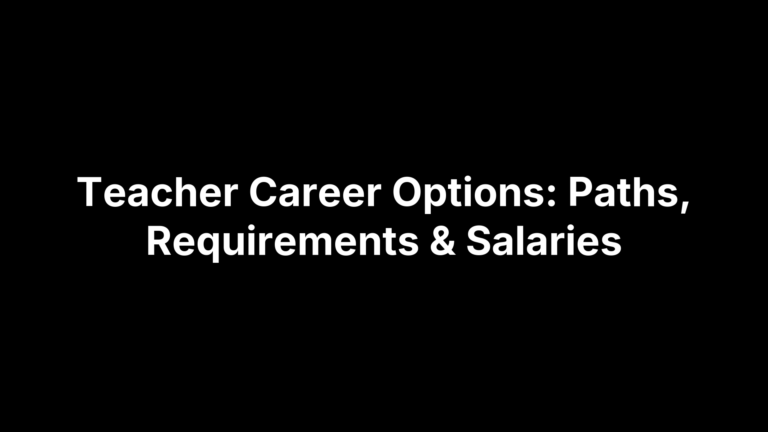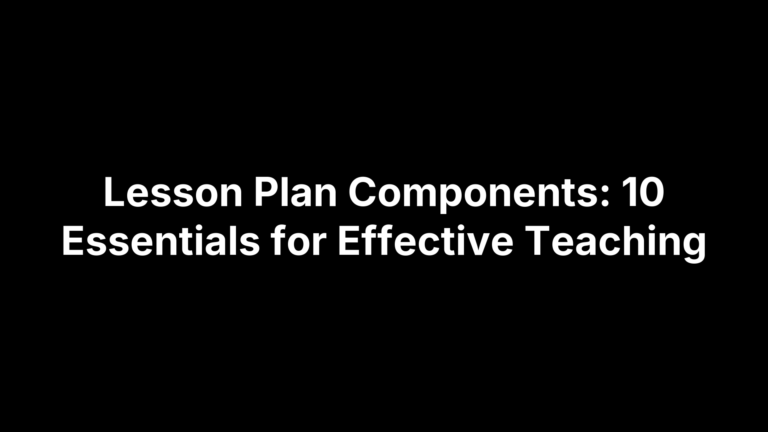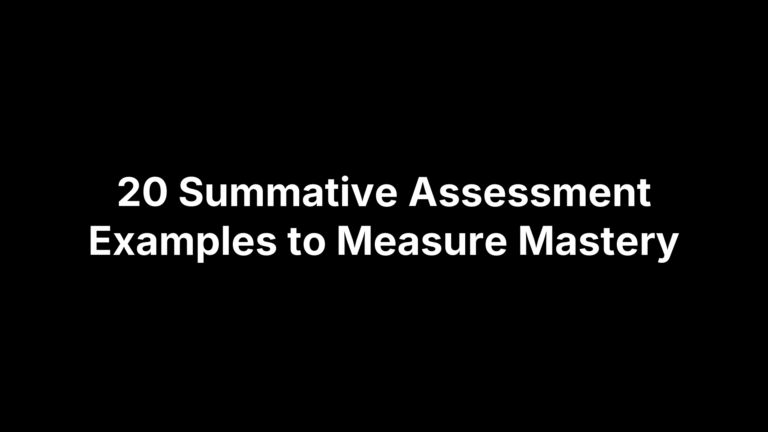Resilient Students: Why Discomfort Is Key to Growth and Success
Education isn’t just about imparting knowledge – it’s also about shaping resilient students who can thrive in the face of challenges. Resilience generally refers to a person’s ability to adapt well to adversity, to bounce back from setbacks, and to keep going even when things get tough. Crucially, resilience is not an inborn trait but a skill developed through experience: “It is derived from the ways that children learn to think and act when faced with obstacles large and small”. In other words, when students encounter challenges and discomfort in a supportive environment, they learn coping strategies and perseverance that shape their character. Over time, those experiences help them “emerge from challenging experiences with a positive sense of themselves and their futures.” This article explores why it is important for students to sometimes do uncomfortable things in school – tackling difficult tasks, facing failure, stepping outside their comfort zones – so that they can build resilience and become better-performing, confident adults.
The Value of Resilience in Education and Life
Resilience is widely recognized as a critical factor in long-term success and well-being. Research in psychology and education has repeatedly shown that when students develop resilience – often manifested as grit, perseverance, or “academic buoyancy” – they tend to do better academically and socially. For example, a 2025 Frontiers in Psychology study noted that resilience is an “important positive psychological factor” influencing academic performance. Multiple studies have found that academic resilience – the capacity to overcome setbacks and stress in the school context – positively affects academic achievement. In one longitudinal study, college students with higher resilience even showed improved grades over time, suggesting that building resilience actively enhances academic success.
Real-world observations bolster these findings. Psychologist Angela Duckworth’s influential research on “grit” (passion and perseverance for long-term goals) reveals that persistent, resilient students often outperform their more naturally gifted but less determined peers. In one Ivy League sample, “the grittiest students – not the smartest ones – had the highest GPAs,” with less naturally high-IQ students compensating by working harder and demonstrating more stamina in the face of challenges. Likewise, at the U.S. Military Academy West Point, a cadet’s grit score (a marker of resilience) was the best predictor of surviving the notoriously rigorous “Beast Barracks” training, more than intelligence or physical fitness. These examples underline that resilience and the willingness to push through discomfort are deeply linked to performance – whether in academics or other demanding arenas.
Beyond grades and awards, resilience carries lifelong benefits. Children who cultivate resilience early tend to have better mental health outcomes and coping abilities later. By learning healthy ways to handle stress and failure in childhood, they are less likely to be overwhelmed by anxiety or adversity as adults. In contrast, youths who never develop these coping skills may struggle when they eventually encounter hardship. “Resilience works like a muscle we can build through effort and repetition,” psychologist Mary Alvord explains. Like muscles, resilience strengthens with use – which means students need opportunities to face challenges and practice bouncing back. Ultimately, resilient students grow into adults who approach difficulties with confidence, adaptability, and optimism.
Discomfort as a Catalyst for Growth in Building Resilient Students
Discomfort is often the catalyst for growth and learning. This idea might seem counterintuitive in education – after all, we want students to enjoy learning. Yet, as any athlete or musician knows, real improvement comes from stretching beyond one’s comfort zone. The same holds true in the classroom: when students engage with material that challenges them, or grapple with problems that don’t have easy answers, they experience the productive struggle that drives development.
Educational psychologists often describe learning as occurring in zones. There is the comfortable zone of tasks a student can already do easily, the growth or “learning zone” of tasks that challenge the student, and a panic zone of tasks far beyond the student’s current ability. To foster growth, learners must step out of the comfort zone and into that sweet spot of challenge. “The Learning Zone Model demonstrates how, in order to learn successfully, we must be challenged to push beyond our comfort zone,” one educator explains. In the learning zone, students feel some unease or struggle as they stretch their skills, but this focused effort leads to new abilities. In contrast, staying too long in the comfort zone leads to stagnation – “you’re not learning or developing new skills, because you aren’t stretching to try new things.” A task that is slightly uncomfortable prompts curiosity and effort, whereas tasks that are too easy can breed boredom and complacency.
Importantly, the goal is productive discomfort – the kind that spurs growth – rather than overwhelming stress. If challenges go too far beyond a student’s capacity (entering the “panic” or alarm zone), the student may feel hopeless or frightened, which blocks learning. Effective educators aim for that optimal zone: challenging students enough to engage them, but providing enough support and safety so that the discomfort remains manageable. Under those conditions, “moving into the learning zone may feel uncomfortable at first, but it is an opportunity for growth.” Students learn that they can survive feeling confused or unsure – and that on the other side of struggle lies new understanding. Over time, today’s learning-zone challenges become tomorrow’s comfort zone, as the student’s skills expand. This is how resilience is built: by repeatedly facing a slightly uncomfortable challenge, working through it, and realizing one can overcome.
Modern research on “desirable difficulties” and productive struggle in education affirms that introducing a bit of difficulty in learning leads to deeper mastery. When students are given the chance (and time) to grapple with complex tasks, they tend to develop a stronger conceptual grasp and perform better when applying their knowledge in new situations. In one review, students who were allowed to struggle with challenging problems – instead of being immediately rescued by a teacher – encoded their understanding more deeply and showed improved ability to transfer their learning to novel questions. Far from discouraging learners, this kind of “optimal adversity” can increase engagement. Many teachers observe that students display more pride and motivation after overcoming a tough problem than after breezing through an easy one. The initial discomfort of not knowing the answer right away is a powerful teacher, pushing students to think critically, experiment with strategies, and ultimately achieve a “mastery experience” – a success earned through effort. Such mastery experiences are profoundly important. Psychologist Albert Bandura noted that mastery achieved through some struggle is the most potent source of self-efficacy – it proves to students that “they can muster whatever it takes to succeed”. In essence, every time a student says “I did it!” after wrestling with a problem, they are a bit more likely to face the next challenge with confidence.

Resilient Students Learn Through Failure and Challenge
Allowing students to encounter failure or setbacks in a supportive school setting can be just as valuable as celebrating their successes. While failure is never the goal of education, it is an inevitable part of real learning. When students try something difficult – an ambitious science experiment, a complex math problem, a speech in front of the class – there is a real chance they will falter, at least at first. Experiencing those moments of frustration or failure, and learning to bounce back from them, is key to developing resilience. If students never face failure, they never learn how to recover; if they never feel frustration, they miss the chance to practice calming themselves and persevering.
Research supports the idea that some adversity in life can be beneficial. A notable study in the journal Psychological Science found that individuals who had experienced moderate levels of adversity coped with stress better than those who had experienced either very high adversity or none at all. In controlled experiments, people with a history of a “normal” amount of struggle (but not extreme trauma) showed more adaptive responses to stress: for example, their cardiovascular reaction to a test remained in a healthier “challenge” mode, rather than tipping into a threat response. Similarly, participants with moderate adversity in their backgrounds reported less emotional distress and even lower pain levels in a lab stress task compared to those who led relatively sheltered lives. These findings align with the idea that overcoming everyday challenges inoculates us against stress – much like a vaccine exposes the body to a small dose of a germ to build immunity. By struggling and sometimes failing in low-stakes situations, students gradually learn how to manage frustration, regulate their emotions, and try new approaches, which prepares them for the higher stakes they’ll face as adults.
In classroom terms, failure can be reframed as “productive failure” or “learning from mistakes.” When teachers create an atmosphere where setbacks are treated as learning opportunities, students gain resilience. For example, developmental psychologist Marilyn Price-Mitchell emphasizes that educators should foster a mindset where “failure, setbacks, and disappointment are an expected and honored part of learning.” In such classrooms, teachers praise hard work, perseverance, and grit – not just perfect grades or easy successes. Students are taught to analyze what went wrong, make adjustments, and try again. Some schools even have students share “favorite mistakes” and what they learned, to normalize the fact that everyone stumbles on the path to mastery. This approach sends a powerful message: struggling doesn’t mean you’re stupid or incapable – it means you’re learning.
Indeed, giving students controlled doses of difficulty builds not only resilience but also creativity and resourcefulness. When a child confronts a tough problem and doesn’t quit, they often end up discovering new problem-solving strategies. They learn to ask for help or collaborate when needed, to break problems into parts, or to persist a bit longer when the solution isn’t immediately apparent. These are all lifelong skills that come directly from facing discomfort rather than avoiding it. As one education guide puts it, “productive struggle prompts learners to actively grapple with complex concepts… This intentional introduction of difficulty sparks cognitive engagement as students confront obstacles, make mistakes, and persist in finding solutions.” Over time, students even become more comfortable with the feeling of discomfort – they recognize the butterflies in their stomach or the mental strain as a sign that they are on the brink of growth, not a signal to run away. By the time they reach college or the workplace, such individuals are far less likely to be discouraged by the first setback, because school has been a training ground for resilience.
The Cost of Avoiding Challenges: Why Comfort Isn’t Always Your Friend
If some adversity builds resilience, then what happens when we shield students from all discomfort? Research and experience paint a cautionary picture: overprotection can leave young people ill-equipped to handle inevitable stressors. For instance, a 2025 study by McGill University and UCLA found that students who grew up with overprotective or overly controlling parents were significantly more vulnerable to anxiety when they transitioned to university. Having been protected from many normal stressors and decision-making in adolescence, these first-year college students struggled to cope with new challenges on their own. The study noted a stronger link between experiencing routine college stress (like academic pressure or social adjustments) and feeling high anxiety among those from very protective households. The lead author explained that while the research doesn’t prove causation, it fits with a larger body of evidence: “Overprotective parenting leads to insecure attachment and poorer emotion regulation, both of which are linked to greater vulnerability to anxiety.” In plainer terms, when adults always smooth the path for a child – removing obstacles and discomfort – the child misses out on learning how to self-soothe, problem-solve, and gain confidence from overcoming difficulties. Later, when life inevitably presents an obstacle, that young person is more likely to feel helpless or panic because they haven’t practiced resilience.
This principle applies in the classroom as well. If teachers or parents consistently intervene the moment a student struggles – providing answers immediately, steering them away from any risk of failure – the student may develop a low tolerance for frustration. They could start avoiding challenges altogether, sticking only to tasks where success is guaranteed. Over time, this can erode motivation and curiosity. As one educator observes, “over time, students who are continually insufficiently challenged tend to become disengaged and complacent,” putting in minimal effort and skimming by with superficial learning. Crucially, many of these students “fail to develop resilience and perseverance with difficult tasks” because they were rarely pushed to persist when things got hard. A task that’s too easy might give temporary comfort, but it robs the student of the chance to strengthen their problem-solving muscles and persistence. It’s analogous to physical exercise: never breaking a sweat might feel relaxing, but your strength and stamina won’t improve. As the old saying goes, “smooth seas do not make skillful sailors.” Students need some waves and storms (on a manageable scale) during their school years to become capable, resilient navigators later in life.
It’s worth noting that balance is important. Embracing discomfort in education does not mean causing distress or ignoring students’ limits. Psychologists stress that support and safety are the foundation that makes productive discomfort possible. Students should feel emotionally and physically safe at school – they should trust that their teachers and peers will not mock or punish them for mistakes, and that asking for help is encouraged. When that sense of safety is in place, students can step out of their comfort zones without fear of humiliation. In such an environment, “peace does not mean the absence of discomfort, but rather, the ability to navigate discomfort from a place of stability.” A student who knows their teacher “has their back” will be more willing to attempt a hard problem or voice a dissenting idea in class. On the other hand, pushing kids into discomfort without support can backfire – it may place them in the panic zone, reinforcing a negative experience. Thus, the goal is “challenging, yes. Impossible, no.” as educator Lee Ann Jung puts it. The right level of challenge – just beyond the current ability, but attainable with effort – coupled with a safety net of encouragement, is what yields growth.
From Elementary to High School: Resilient Students Building Journey
Building resilience is a developmental journey that spans from early childhood through adolescence. The challenges a first grader faces look very different from those of a high school senior – but both can serve as age-appropriate training in resilience. Education stakeholders (teachers, parents, administrators) can nurture resilience at every stage by deliberately introducing manageable challenges and guiding students through them.
In elementary school, children are just beginning to encounter academic and social difficulties, and they need guidance to navigate them productively. Young children have shorter attention spans and less emotional regulation, so educators often struggle with how much to let them grapple with a problem before stepping in. It can be tempting to immediately help a child who is “stuck” so as not to discourage them. However, even at early ages, it’s possible – and beneficial – to let students experience “productive struggle” in a carefully scaffolded way. For example, a second-grade teacher might give students a slightly tricky puzzle in math and encourage them to try different strategies for a few minutes before intervening. During that time, the teacher normalizes feeling confused or frustrated (“This puzzle is tricky, but I know you can figure out something with the tools you have!”) and reminds students of strategies: re-read the question, draw a picture, use counters, etc. When a student does get the answer after persistent effort, the teacher highlights the effort: “Look at what you did – you kept trying and found a way!” The child not only learns the math concept more deeply, but also gains confidence in their ability to face challenges.
Educators like Katie Perez, an elementary teacher, suggest explicitly teaching kids the distinction between unproductive struggle and productive struggle. Young students can help define productive struggle as “working hard toward a goal and – when we hit a challenge – using all the resources we have to keep going and not give up.” Teachers can create class charts listing what productive struggle looks like (trying new strategies, asking a friend or teacher for hints, taking a calming breath) versus what giving up looks like. By coaching children through this process, we instill early on that a bit of struggle is normal and even desirable in learning. Of course, with younger students, the challenges must be calibrated. As Perez notes, scaffolding is key: teachers can give students a few “easy wins” first to build confidence (e.g. solving a simpler problem that reviews prior knowledge) before presenting a harder task. This way, children have some momentum and self-trust that they can carry into the tougher problem. The teacher remains attentive, ready to provide hints or moral support so that frustration doesn’t turn into despair. When these small struggles are repeated and navigated successfully, resilience starts to take root – even in a third grader.
By middle and high school, students are developmentally ready for greater challenges and independence. In fact, secondary educators often explicitly value grit and resilience, understanding that mastering advanced coursework or complex projects requires persistence. At this stage, the groundwork laid in elementary years can pay off. A student who, in younger years, learned to tolerate a bit of frustration will be better prepared for the rigorous content of high school AP classes or the social complexities of teenage life. They will have an internalized message that challenges are a part of success rather than a sign of failure. For instance, a ninth grader tackling an essay revision might recall that feeling of struggling through earlier writing assignments and take it in stride – brainstorming new approaches instead of concluding “I’m just bad at writing.” High school teachers can reinforce this by continuing to emphasize growth mindset principles: praising effort, encouraging students to view “obstacles as a critical part of success”, and highlighting improvements made through practice. Many high schools incorporate lessons on time management, goal-setting, and coping strategies into their advisory or homeroom programs, explicitly coaching students on how to handle the heavier academic and personal demands of adolescence. These supports, combined with the increasing challenges, ensure that students don’t remain in a comfort zone. Instead, they are continually nudged into new territories – whether that’s learning to collaborate with a difficult lab partner, preparing for a big exam, or dealing with not making the varsity team – and learning each time that they can survive and even thrive afterward.
One crucial transition is the step from high school to college or the workforce. Students who have been allowed and encouraged to build resilience throughout their K-12 years will enter this transition far more prepared. They are less likely to crumble when faced with the culture shock of college, or the independence of living away from home, or the learning curve of a first job. Research in Development and Psychopathology underscores this: students who had practice handling stress (and the guidance to reflect on those experiences) showed lower anxiety and better adjustment when they moved into university life. They had essentially been “vaccinated” with small stressors and learned responses, whereas more sheltered peers experienced the full brunt of stress all at once. This suggests a continuum: each grade level’s challenges scaffold to the next, and a student who is resilient in high school is on track to be a resourceful, resilient adult. Indeed, when schools explicitly focus on resilience – such as incorporating resiliency skills into curriculum – they see broad benefits. One pilot program embedding resilience lessons in an elementary curriculum found not only improved student self-esteem but also more compassion and better behavior in class. The same curriculum, when extended through middle and high school in age-appropriate ways, reinforced those gains across the developmental spectrum. By graduation, those students had a toolkit of strategies to handle academic pressures and life challenges alike.
Fostering a Culture of Resilience and “Good Discomfort”
All educational stakeholders – teachers, parents, and school leaders – have a role in creating a culture that values resilience and recognizes the productive power of discomfort. Here are some key approaches to consider:
Normalize Challenges and Mistakes: Make it clear in both words and classroom policies that struggling with material is expected and okay. When students see that “failure… and disappointment are an expected and honored part of learning”, they are less likely to feel shame in difficult moments and more likely to persevere. Teachers can share stories of their own mistakes, celebrate “good tries,” and allow revisions on work – all signaling that learning is an iterative process.
Encourage a Growth Mindset: Emphasize that ability is not fixed, and that effort leads to improvement. Carol Dweck’s research has shown that students who view intelligence as growth-oriented are more willing to take on hard tasks and remain resilient when encountering setbacks. Simple shifts in feedback can help: praise the strategy a student used or the extra time they invested, rather than just saying “You’re smart” or only noting the grade. This reinforces that overcoming challenges is what leads to growth. Success with a challenging task, as one article noted, reinforces a growth mindset – students start seeing challenges as opportunities rather than threats.
Provide Safe and Supportive Conditions: Challenge and discomfort should always be paired with support. As noted, psychological safety is the foundation that makes productive struggle possible. This means cultivating a classroom atmosphere of respect and trust, where students feel their feelings and ideas are valued. It also means being an encourager rather than a savior: instead of immediately solving a student’s problem, a supportive adult might guide them with questions or just express confidence (“I know this is tough, but I believe you can figure something out. I’m here if you need me.”). Students who feel safe are more likely to venture into the unknown and take the necessary risks to grow.
Teach Coping and Self-Regulation Skills: Resilience isn’t about raw endurance alone – it also involves knowing how to handle stress. Schools can integrate social-emotional learning that teaches students concrete strategies: deep breathing, positive self-talk, breaking tasks into smaller steps, seeking help after trying oneself, etc. When a challenging situation arises (a tough exam, a conflict with a peer), students can then apply these tools. Such skills help keep discomfort at a productive level (manageable stress) rather than tipping into panic. Over time, students become more confident that they can regulate their emotions and thoughts under pressure, which further reinforces resilience.
Gradually Increase Challenge (Scaffold Resilience): Just as you wouldn’t hand a beginner a professional-level task, educators should build up the level of challenge as students grow. Start with small doses of discomfort in earlier years and incrementally raise the bar. This “training program” for resilience might mean, for example, encouraging a shy elementary student to speak in front of a small group, then by middle school in front of the class, so that by high school they can handle presenting to a larger audience or participating in debates. Each success at a lower level of challenge paves the way for the next – and occasional failures at each stage become lessons that propel future success. By seeing that they can survive being uncomfortable and even triumph, students expand their comfort zone continually.
Recognize and Reflect on Growth: Finally, help students connect the dots between discomfort and development. When a student conquers a difficult task, explicitly acknowledge not just the result but the journey: “Remember how you struggled with this at first? Look at how your persistence paid off.” Encourage students to self-reflect: “What did you learn from the experience of working on that project that seemed so hard initially?” This reflection helps solidify the understanding that their abilities grew through challenge, reinforcing the resilience cycle. As one psychologist put it, resilience is at its core a belief in one’s own ability to influence outcomes despite adversity. By reflecting on past challenges overcome, students strengthen that belief in themselves.
Conclusion: Preparing Students for the Road Ahead
In the grand scheme of education, helping students become resilient, adaptable individuals is as important as teaching them math, science, or literature. Life will inevitably present each child with tests far beyond the classroom – be it personal setbacks, professional hurdles, or global challenges. The best gift we can give them is the confidence and skill to face those tests head-on, and that gift is forged in moments of manageable discomfort during their schooling years. As the evidence and examples above illustrate, students who sometimes do uncomfortable things – tackle challenging work, risk failure, persist through frustration – tend to grow into stronger learners and more capable adults. By progressively guiding students from elementary through high school to step outside their comfort zones, educators and parents help them build a “resilience muscle” that will serve them for life.
Ultimately, the goal is not to make school hard for hardship’s sake, but to create a rich learning environment where challenge is embraced as a catalyst for growth. With the right support, students learn that discomfort is not something to fear or avoid, but a signal that they are stretching themselves in worthwhile ways. They internalize the message that setbacks are not the end of the road – they are opportunities to learn and begin again more intelligently. Such resilient students leave school not only with knowledge in their heads, but with grit in their character and hope in their hearts, ready to navigate the complexities of adulthood and keep growing throughout their lives. In short, by fostering resilience through occasional discomfort now, we empower the successful, well-adjusted adults of tomorrow.
Sources:
Price-Mitchell, M. (2021). Resilience is not a genetic trait… [children] emerge from challenging experiences with a positive sense of themselves edutopia.org. Edutopia.
Alvord, M. (2021). Resilience works like a muscle we can build through effort and repetition edutopia.org. Edutopia.
Jung, L. A. (2024). Over-challenging vs. optimal challenge (productive struggle) in learning ascd.orgascd.org. Educational Leadership (ASCD).
Boryga, A. (2024). Research shows grappling with challenging tasks leads to deeper learning edutopia.org. Edutopia.
Seery, M. et al. (2013). Moderate lifetime adversity linked to better stress responses than no adversity anthonyongphd.files.wordpress.com. Psychological Science.
Panier, L. et al. (2025). Overprotective parenting tied to poorer stress-coping in college students mcgill.ca. Development and Psychopathology (Summarized by McGill Newsroom).
Borkoski, C. et al. (2025). “Discomfort is a necessary part of growth” – importance of safety and resilience nextgenlearning.org. Next Generation Learning Challenges (NGLC) blog.
Frontiers in Psychology (2025). Resilience positively correlates with academic performance in university students frontiersin.org.
Duckworth, A. (2013). “Grit” research: Perseverance as a predictor of GPA and successamericanradioworks.publicradio.org. American Public Media.
Miller-Karas, E. (2025). Embedding resiliency curriculum improved students’ self-esteem, compassion, and behavior psychologytoday.com. Psychology Today.
Gonser, S. (2021). Strategies for building student resilience (e.g. goal-setting, learning from mistakes) edutopia.orgedutopia.org. Edutopia.
Commons Library (2022). Learning Zone Model: Comfort, Learning, Alarm Zones explained commonslibrary.org.
